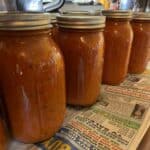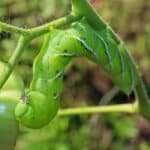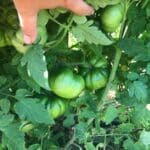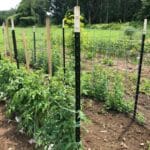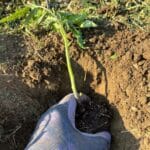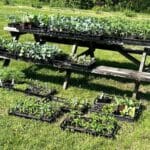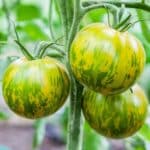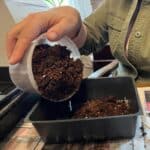Growing tomatoes indoors is a great way to overcome the winter tomato blues.
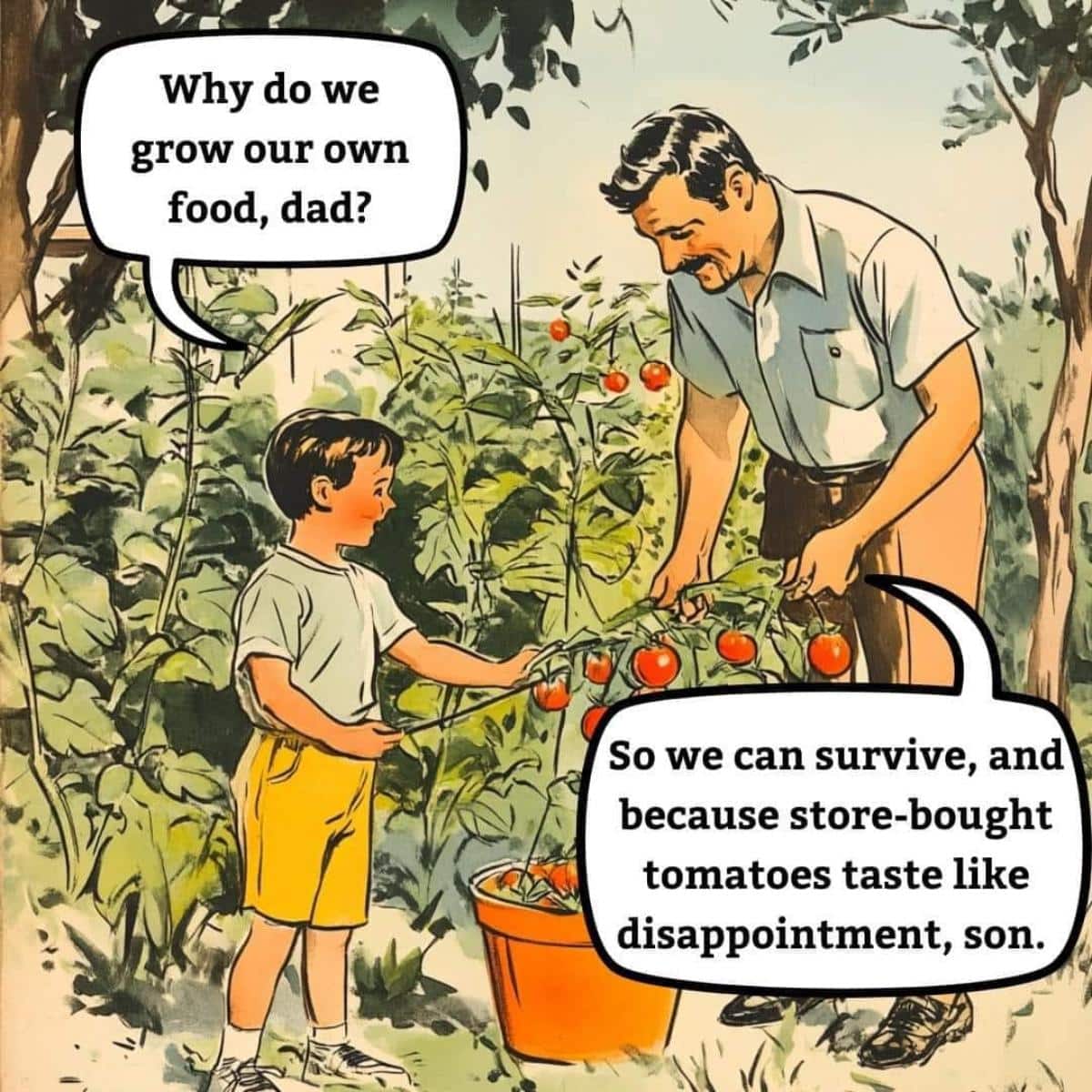
What are the winter tomato blues?
The blues you get because you love fresh tomatoes and you grow your own in the summer but can’t stand to eat the mealy-textured, tasteless tomatoes that are available in the local stores during the winter. (Those tomatoes were also grown from inferior varieties, lacking in nutrition, unnaturally ripened, and probably traveled up to 2500 miles to get to you.)
Jump to:
Can you really grow tomatoes indoors?
Yes! You really can grow tomatoes indoors. You can do it any time of the year, but typically this is a project that people would undertake in the cooler months of fall, winter, and early spring when the temperatures are too low for outdoor tomato growing.
The best tomato varieties for growing inside are the dwarf, micro-dwarf, and miniature varieties. These are small cherry-type tomatoes that are good for fresh use and are used in many roasting and cooking recipes. They are very small and compact. Most need no more than a six-inch pot, and their top size is only about one foot high!
A few small bush varieties (those that do well in patio containers) are good to grow inside, too, if you can spare a sunny corner with a bit more space.
Start indoor tomatoes from seed

You will need to start your own tomatoes from seed for indoor growing through the winter. (Unless you are propagating or moving an older plant, which is discussed below.)
Unlike when we grow tomatoes in the spring season, winter growing is not a widespread practice, so garden centers are not going to bother stocking live transplants for winter growing. You will also need more control over which varieties you grow because you will need a small variety that is manageable for growing inside.
Growing tomatoes from seed is not difficult once you know the basics. Use the same seed starting method for winter tomatoes as you would for starting tomato seeds for transplanting outside in the spring.
For more on how to start tomatoes from seed, read here: 2 Simple Methods to Start Tomatoes from Seed.
When to start indoor tomato plants for off-season growing

The good news about growing tomatoes inside is that you can start them at any time. Winter growing is the most popular time to grow tomatoes indoors, but for some urban dwellers, you may want to grow tomatoes inside at any time of year.
Assuming that you do want to grow tomatoes inside for winter eating, you’ll want to start your tomatoes at least two months before you want to actually pick and eat them.
If you miss that window, though, go ahead and start your seeds when inspiration strikes (or when you think about it).
Since you’re in control of the growing conditions, you’re in control of the timing of the growing, too.
Look at the days to maturity or harvest
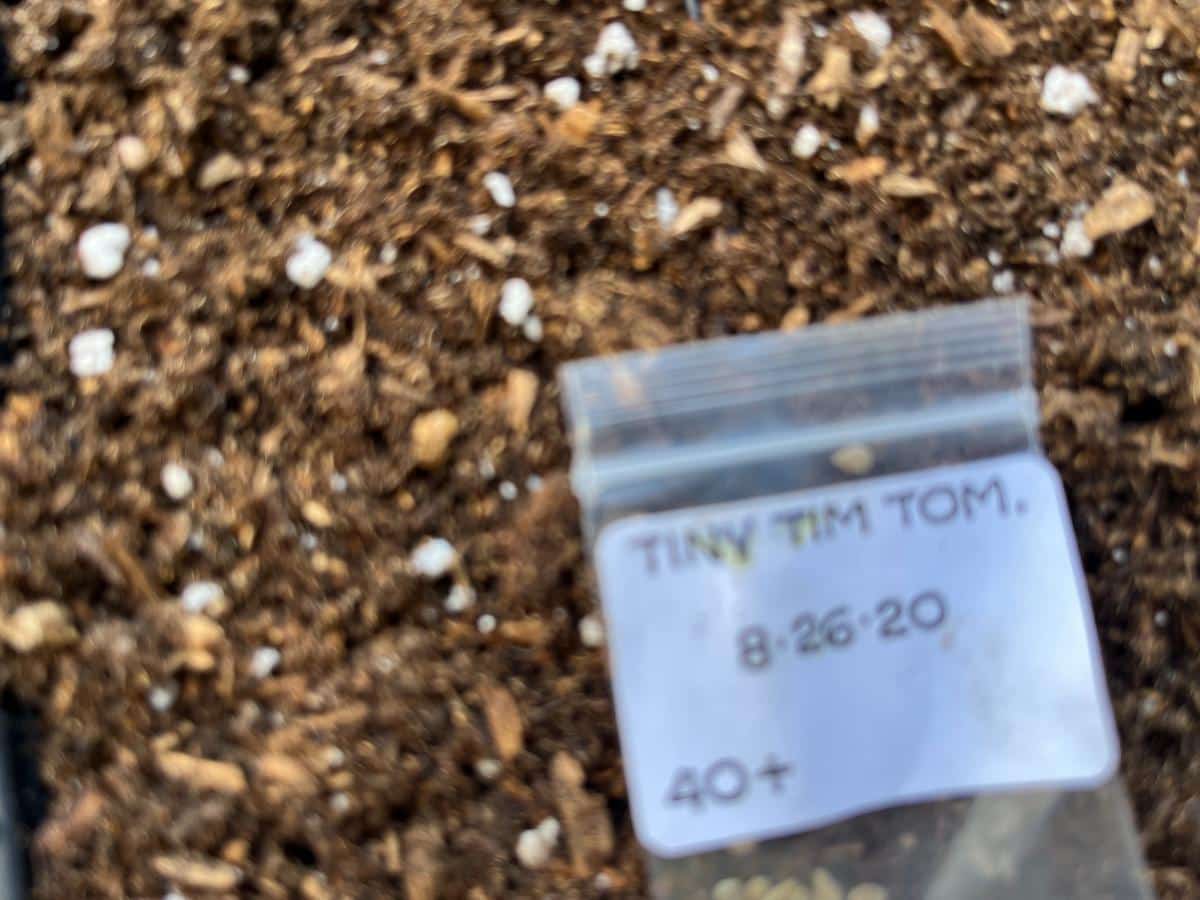
To target a specific date (or estimate) for when your tomatoes will be ready to pick and eat, you need to look at the “Days to Maturity” or “Days to Harvest.”
- Find the number of days to maturity or harvest
- For miniature and dwarf varieties, this should be listed from seed to ripe tomatoes
- Count back on a calendar the number of days to harvest from when you want the tomatoes to be ready
- Find that date, then plant your tomatoes on or about that date
Garden varieties may need 6+ weeks added to the maturity date
If the plant you are researching is listing days to harvest from the date of transplant (more typical in garden varieties), you may need to add up to six weeks to the number of days to harvest.
For garden tomatoes, many seed companies and sites list the days to harvest from transplant time. They will be assuming you started the plants indoors 6 to 8 weeks before that.
If the date given is a true day to maturity (not from transplant), then you can follow the number of days. You can usually count on the days to harvest as being accurate for miniature and micro dwarf tomato seeds.
Sooner is better
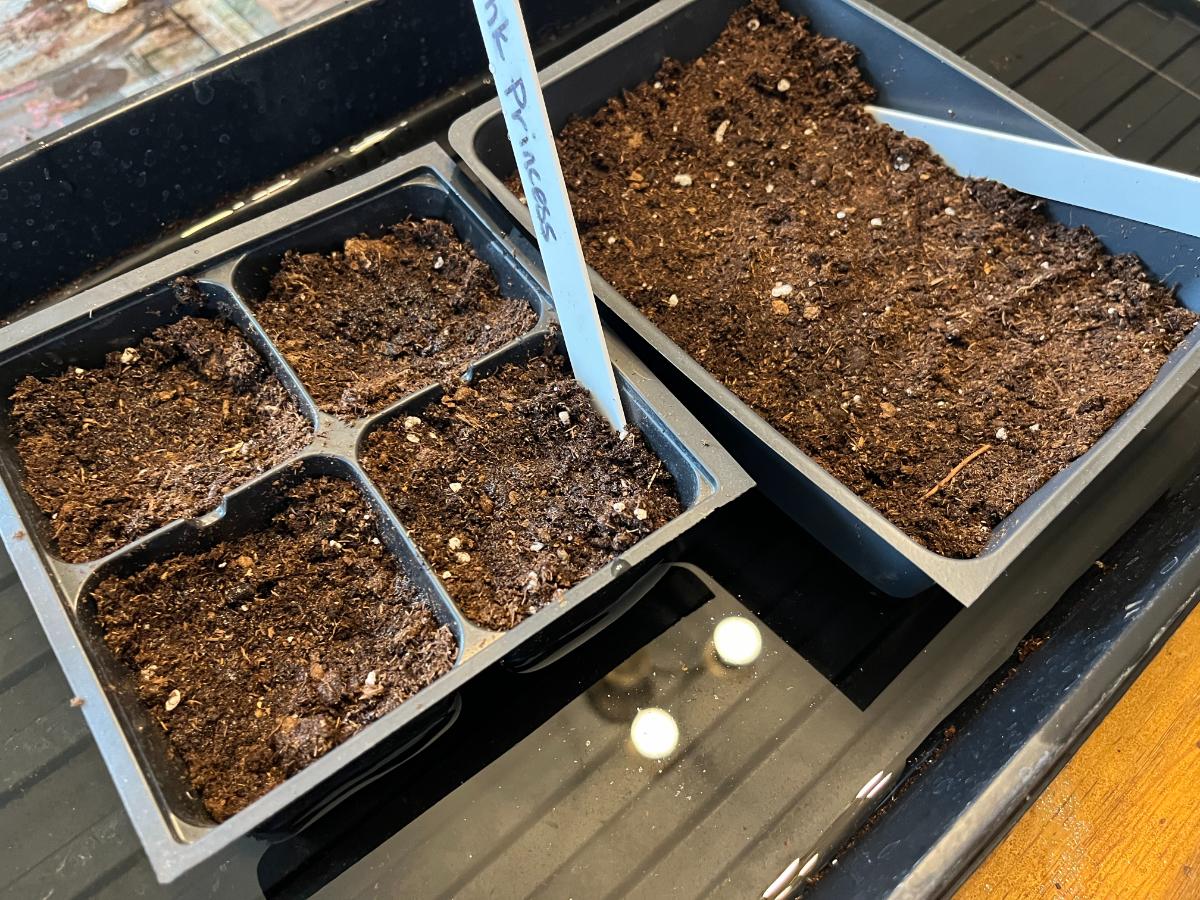
If in doubt, start your tomato plants sooner rather than later. Even determinate tomatoes should yield harvestable tomatoes for several weeks.
For a mostly consistent supply of tomatoes, you will likely want to start your indoor tomatoes while you are still growing outside. If you have very favorable conditions, you can even start those mini plants for indoor growing outside and then move them in as the days cool and frost threaten.
That said, if you have tomatoes in the garden into the fall, and especially if you have many green or under ripe tomatoes to pick off in the fall, those can store well at cool room temperature or in a cool storage space. Those late tomatoes and ripening green tomatoes can keep you in tomatoes while your indoor tomatoes get growing.
So, the right time to plant may be when you pick off the last of your ripe and under-ripe tomatoes from your garden.
Reverse harden tomato plants that are started outside
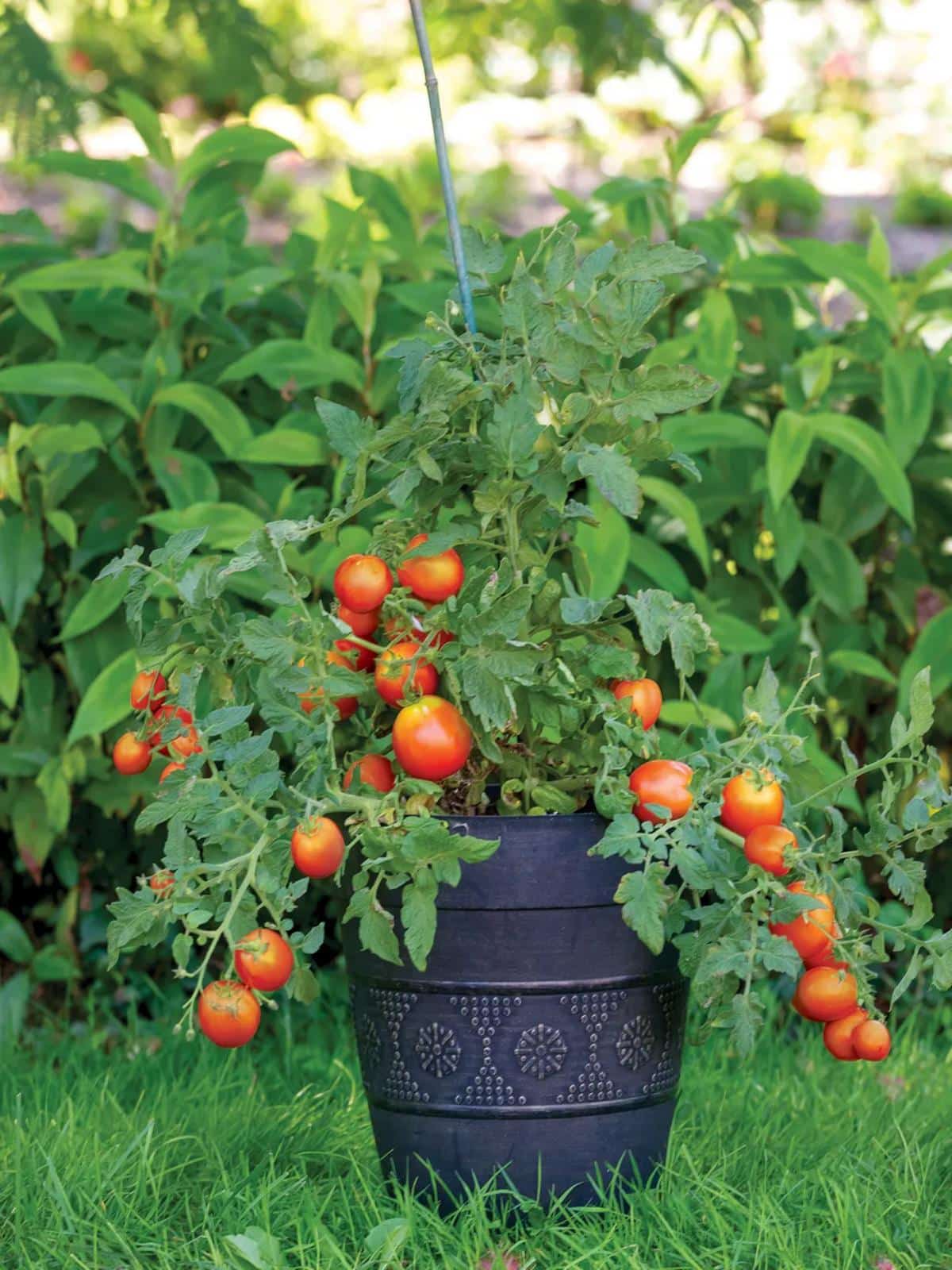
If you do choose to start plants outside to move indoors, keep in mind that they will need to be acclimated to living indoors.
Just as we do with other garden transplants that we start inside and then move outdoors to plant in the garden (or patio garden), we need to gradually introduce outdoor tomatoes to living inside.
- Each day, bring the tomatoes indoors for an hour or two
- Give them the sunniest location you can
- Continue to give the plants time outside to gather the strong sun they are used to
- Increase the time the plants spend inside every two to three days until by the end of two weeks; the plants are spending their entire time inside

- If you don't have enough hours of strong, mostly direct sunlight inside, add a grow light to make up the difference
If a frost is looming, bring the plants in regardless. They will not survive a frost, but they will rebound from an abrupt change (they might do so a little slowly, but they will recover).
Other options for starting indoor tomato plants to grow through winter
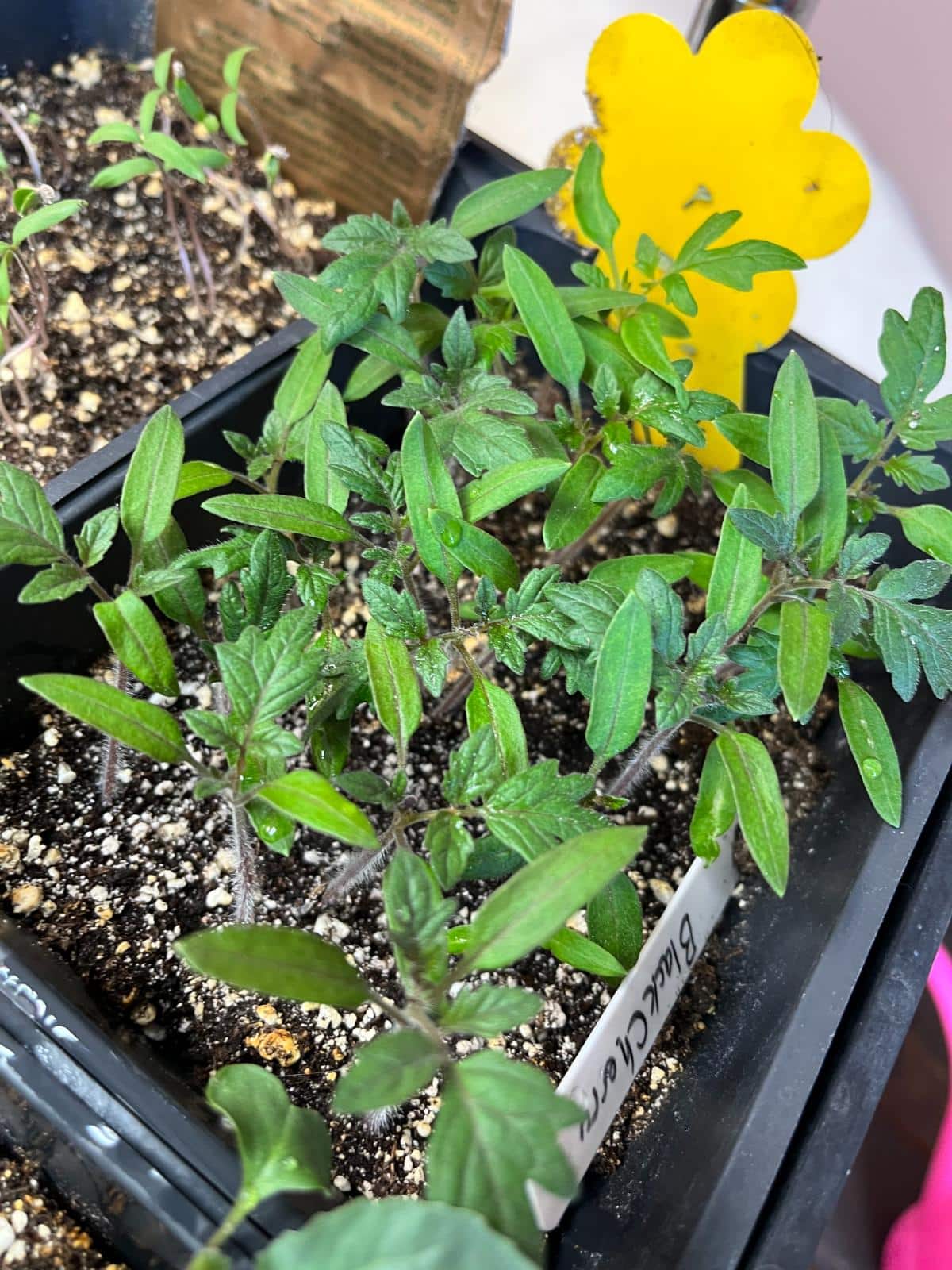
Starting from seed is the simplest and most common option for starting and growing indoor tomato plants, but it’s not the only way to get tomato plants to grow inside.
Some other options include:
- Take a cutting of an outdoor tomato. You can do this if you have a variety that is small enough or manageable enough to also grow inside.
- Tomato cuttings root easily in water and then can be potted up into a pot with soil.
- Keep in mind any cuttings will be a clone of the parent plant (the tomato you took the cutting off). They will grow into the same size and keep the same growth habit.
- So, choose only cuttings from small, compact plants that you can manage inside.
- Large tomato varieties will need large pots, anywhere from a three to a five-gallon pot or pail.
- If you have outdoor patio tomato plants in containers and enough space for them inside, reverse harden them for indoor conditions and move them in to keep growing.
- The best part about moving patio plants in is that they are already growing and don’t need to be restarted, so there is no loss of growing or harvest time!
- For any plants or cuttings that move from the outside in, be sure to look carefully for insects.
- It is a wise idea to treat any outdoor plants or cuttings for bugs.
- A good drench with Neem oil (a natural and organic solution) or another insecticide of your choice should take care of most insects that the tomato plant would bring in.
- Spray the surface of the potting soil, too; insects can fall or hide there.



